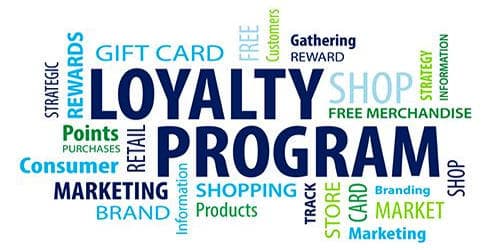A loyalty program is a marketing strategy designed to encourage customers to continue to shop at or use the services of a business associated with the program. A customer loyalty program or rewards program is a marketing strategy that rewards loyal customers that frequently engage with a brand. Today, such programs cover most types of commerce, each having varying features and rewards schemes, including in banking, entertainment, hospitality, retailing, and travel. By rewarding recurring engagement, you can increase customer loyalty and ensure continuous growth for your business.
Customer loyalty is not easily created. The idea behind an effective loyalty program is that the more loyal customers are, the more rewards they’ll get. Customers are driven by their own goals and will be loyal to the company that can fulfill them best. It doesn’t matter if they have a positive history with your brand, if a competitor puts a better offer on the table then the customer is going to take it. In the retailer’s marketing toolkit, loyalty programs have proven themselves as one of the most effective tactics for increasing revenue and inspiring customer loyalty.
Loyalty programs came into existence when companies realized that the competitive advantage that they once experienced due to product differentiation no longer holds good due to a proliferation of similar looking and “me too” products. If you want to build customer loyalty, then you need to be in tune with your customers’ needs. Having a multi-channel service system is one of the best ways to stay connected with your customers, especially when they need help. Customers will have more access to your customer service teams, creating more customer interactions. Loyalty programs are offered by retailers and other corporations as a way to attract and retain customers.
A loyalty program offers a direct line to customers, making communication much easier. Customers who are loyal to your brand are also the most valuable to your business. In fact, studies show that customers who have an emotional connection to your brand tend to have a lifetime value that’s four times higher than your average customer. Aside from announcing new products/services, promoting sales, and the like, a useful item on this list of the pros and cons of loyalty programs is that they facilitate recalls when necessary. These customers spend more with your business, and therefore, should be rewarded for it. After all, you need them the most.
Building a customer loyalty program is a major endeavor for any company, and it can be a game-changing opportunity if created with care and precision. A loyalty program typically involves the operator of a particular program set up an account for a customer of a business associated with the scheme, and then issue to the customer a loyalty card (variously called rewards card, points card, advantage card, club card, or some other name) which may be a plastic or paper card, visually similar to a credit card, that identifies the cardholder as a participant in the program. Cards may have a barcode or magstripe to more easily allow for scanning, although some are chip cards or proximity cards.
















